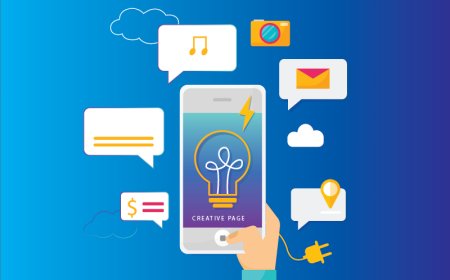Building Future-Ready Labs: A Guide to Educational Electronics Lab Equipment
Explore essential educational electronics lab equipment that empowers students with hands-on skills. Perfect for technical training and engineering labs.
In todays rapidly changing technology landscape, traditional classroom teaching is no longer enough. To meet modern industry demands, technical institutions must create future-ready labs equipped with the right educational electronics lab equipment. These tools are vital in delivering hands-on experience that prepares students for real-world engineering challenges.
Whether for electronics, electrical, or mechatronics training, a well-equipped lab bridges the gap between textbook theory and practical application.
What Is Educational Electronics Lab Equipment?
This term refers to a wide range of tools, instruments, and training systems designed specifically for teaching and learning in technical fields. They enable students to perform experiments, develop projects, and understand core principles across domains such as:
-
Analog and digital circuits
-
Embedded systems and microcontrollers
-
Industrial automation and control
-
IoT and sensor-based applications
-
Communication systems
Key Equipment for a Modern Electronics Lab
A high-performing educational lab should include:
1. Analog & Digital Trainer Kits
For teaching the foundations of circuit design, logic gates, and signal processing.
2. Microcontroller Development Boards
Ideal for embedded programming, interfacing sensors, and automation projects.
3. Power Electronics Trainers
Used to explore inverters, rectifiers, converters, and motor control systems.
4. IoT Training Modules
Focus on wireless protocols, real-time data transmission, and smart device integration.
5. Communication Lab Trainers
Teach AM, FM, digital modulation techniques, fiber optics, and mobile communication basics.
6. Power Supply Units & Meters
Essential for powering circuits and measuring electrical parameters during experiments.
Benefits of Equipping Labs with Modern Tools
-
Encourages project-based learning
-
Helps students gain job-ready technical skills
-
Promotes research, creativity, and innovation
-
Aligns with engineering curriculum standards
-
Supports national skill development initiatives and certifications
Features to Look for in Lab Equipment
When setting up or upgrading your lab, consider:
-
User-friendly interfaces for easy operation
-
Durability and safety compliance for student use
-
Experiment manuals and documentation
-
PC/software integration for data acquisition and control
-
Scalability to support beginner to advanced-level experiments
Supporting Technical Education in the Digital Age
Educational labs that integrate electronics, software, and automation technologies prepare students for roles in industries like robotics, telecommunications, automotive systems, and renewable energy. With increasing adoption of Industry 4.0, labs should also include:
-
PLC and HMI systems
-
AI-integrated sensors
-
Cloud-based monitoring tools
-
Simulation software for remote learning
Conclusion
Setting up a modern, well-equipped educational lab is a crucial investment in student success and industry readiness. The right educational electronics lab equipment provides a strong foundation in hands-on skills, critical thinking, and problem-solving.
Institutions that adopt future-oriented lab solutions are better positioned to produce the next generation of innovators, engineers, and technicians ready to thrive in a tech-driven world.




























